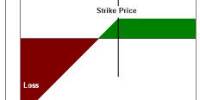Clearing House is an intermediary between buyers and sellers of financial instruments. In the course of daily transactions, each bank has to receive a number of cheques drawn on other banks. The clearing house stands in the middle and takes both sides to make sure that both parties are satisfied. When the value of these cheques received by each bank is calculated and compared, it is found that some banks become indebted to other banks. These debts are settled through a department of the central bank, which is known as a clearing house. If a buyer fails to pay for the securities he has purchased, the clearinghouse must seek recovery of the funds or wait for them to become available. It exists to ensure the smooth functioning of financial markets.
It acts as an intermediary between a buyer and seller and seeks to ensure that the process from trade inception to settlement is smooth. In acting as the middleman, a clearing house provides the security and efficiency that is integral for financial market stability. Its main role is to make certain that the buyer and seller honor their contractual obligations. The purpose is to reduce the cost, settlement risk and operational risk of clearing and settling multiple transactions among multiple parties. The clearing house makes sure that the right goods are delivered to the buyer, in terms of both quantity and quality. It ensures that transactions happen as planned.
Functions –
- It guarantees that the transactions will occur smoothly and that both parties will receive what is due to them.
- The clearing firm makes sure that the parties involved respect the system and follow the proper procedures for a successful transaction.
- It provides a level playing field for both parties, where they can agree on the terms of their negotiation.
- It provides extra security so that investors can trade freely, knowing that their investment decisions will be honored and enforced by the clearing firm.
- To mitigate risk, clearinghouses also often require traders to deposit additional funds into their brokerage accounts in order to maintain minimum “margin requirements.”
















